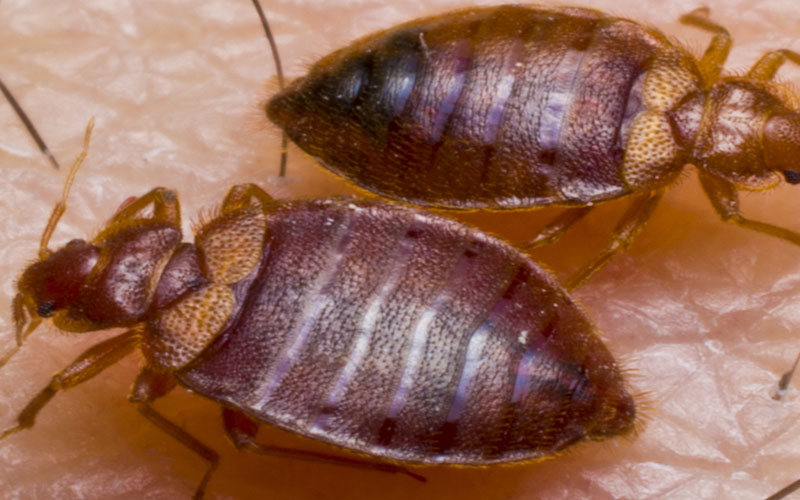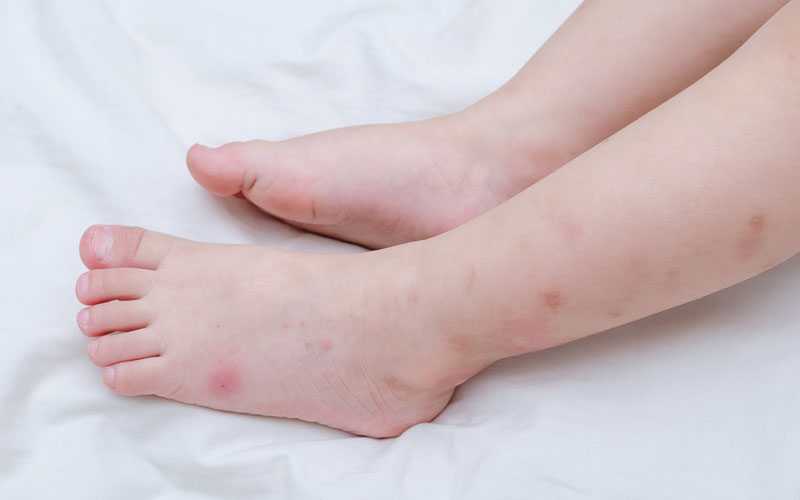Bed Bug Removal & Exterminator St. Louis
Introduction to Bed Bugs
Bed bugs, known scientifically as Cimex lectularius, are small, elusive insects that thrive in the comfort of our homes, particularly in bedrooms. These pests are notorious for their stealthy existence and the discomfort they cause. In St. Louis, MO, like in many urban areas, bed bug infestations have become a significant concern for homeowners. Understanding these pests is the first step in combating their presence.
Bed Bug Stats
- Color: Reddish-brown, becoming more red after feeding.
- Size: About the size of an apple seed, roughly 5-7 mm in length.
- Legs: Six legs, adept at crawling quickly.
- Antennae: Two, used for sensing their environment.
- Shape: Oval and flat, allowing them to hide in narrow spaces.
- Region: Found in all 50 states, with urban areas like St. Louis having higher incidences.
Pest Identification
Recognition:
Bed bugs are small, wingless insects with a reddish-brown color, measuring about 4-5 mm in length. They have flat, oval bodies that become swollen and redder after feeding. Signs of infestation include small blood stains on bedding, dark fecal spots on mattresses or walls, and a sweet musty odor. Shed skins and clusters of white, pinhead-sized eggs in crevices can also indicate their presence. Early identification is crucial in controlling their spread.
Biology:
The life cycle of bed bugs includes several stages: egg, nymph, and adult. They can live for several months without feeding and prefer human blood but can feed on other mammals if necessary. Reproduction is rapid, with females laying hundreds of eggs in their lifetime. Understanding their biology is key to developing effective control strategies.
Habits:
Bed bugs typically hide in close proximity to their hosts, favoring cracks and crevices in beds, furniture, and walls. They are primarily nocturnal, feeding on unsuspecting hosts during the night. The recent increase in global travel has significantly contributed to their widespread distribution. Understanding their habits aids in early detection and prevention.
How Do I Know if I Have Bed Bugs?
Indicators of a bed bug infestation include:
- Small blood stains on bedding.
- Dark or rusty spots of bed bug excrement on mattresses and walls.
- Bed bug skins shed during molting.
- A musty odor from the bugs’ scent glands.
- Physical bites on the skin, often in a line or cluster.
Where Do Bed Bugs Come From?
Bed bugs are expert hitchhikers, traveling on luggage, clothing, used furniture, and other personal belongings. They can move between apartments and homes, making multifamily dwellings particularly vulnerable.
How Do I Get Rid of Bed Bugs?
To effectively combat bed bug infestations:
1. Identify Infested Areas: Inspect all areas of your home, particularly sleeping areas.
2. Containment: Vacuum regularly and use a steamer on mattresses and furniture.
3. Chemical Treatments: Use EPA-registered bed bug sprays, carefully following instructions.
4. Heat Treatment: Consider professional heat treatment, which is highly effective.
5. Monitor and Repeat: Continuously check for bed bugs and repeat treatments if necessary.
The Importance of Hiring Bed Bug Control Specialists
While DIY methods exist, eliminating bed bugs is often challenging and requires professional intervention. STL Pest Control, a trusted expert in St. Louis, MO, offers specialized knowledge and equipment to ensure complete eradication. Professionals are trained to identify, treat, and prevent infestations more effectively than over-the-counter solutions.
Ongoing Bed Bug Prevention
Prevention is key in keeping your home bed bug-free. Regularly inspect your home, especially after traveling. Encase mattresses and box springs, declutter to reduce hiding spots, and consider yearly inspections by professionals like STL Pest Control to ensure your home remains safe and comfortable.
Bed Bug Frequently Asked Questions
How can I identify a bed bug infestation?
Look for small blood stains on bedding, dark fecal spots on surfaces, a sweet musty odor, shed skins, and white eggs in crevices.
What do bed bugs feed on?
Bed bugs primarily feed on human blood, but can feed on other mammals if necessary.
Are bed bugs active during the day?
Bed bugs are mainly nocturnal, feeding at night and hiding in dark places during the day.
How can I prevent bringing bed bugs home from a trip?
Inspect hotel rooms, especially beds and furniture, and avoid placing luggage on the bed.
What professional solutions are effective against bed bugs?
Options include chemical treatments, heat treatments, and cryonite freezing, ideally as part of an integrated pest management strategy.



Our Office













